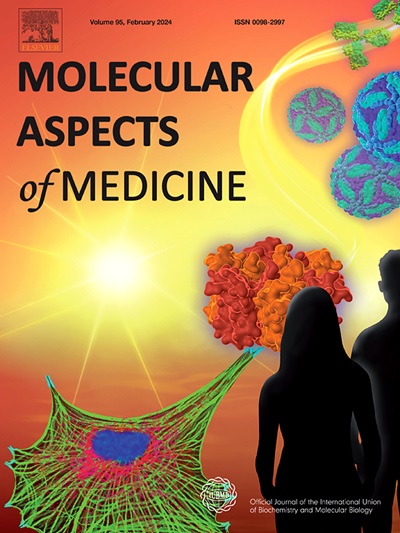Viral and non-viral vectors for gene therapy in the treatment of bone-related disorders: molecular insights and clinical perspectives
IF 10.3
2区 医学
Q1 BIOCHEMISTRY & MOLECULAR BIOLOGY
引用次数: 0
Abstract
Gene therapy offers a transformative approach for treating debilitating bone disorders by delivering therapeutic genetic material to target sites. The efficacy and safety of this approach are heavily reliant on the chosen delivery vehicle, either viral or non-viral vectors. Viral vectors are characterized by high transduction efficiency and the potential for long-term expression, as exemplified by Adeno-Associated Viruses (AAVs) and lentiviruses. However, their use is tempered by concerns over immunogenicity, manufacturing complexity, and safety. In contrast, non-viral vectors, which employ synthetic or physical methods, offer compelling advantages in safety, reduced immunogenicity, and manufacturing scalability but traditionally suffer from lower delivery efficiency. Ongoing research focuses on enhancing their cellular uptake and stability through advanced strategies such as lipid and polymer complexation and physical methods, aiming for targeted delivery to bone tissue. This includes the development of various nanocarriers and hydrogels designed to overcome physiological barriers. This study aims to comprehensively review and compare the current landscape of viral and non-viral gene therapy vectors, highlighting their mechanisms, advantages, disadvantages, and clinical applicability in the context of bone tissue regeneration and the treatment of bone disorders, with a focus on recent advancements and future directions to enhance therapeutic efficacy and safety.
用于骨相关疾病的基因治疗的病毒和非病毒载体:分子见解和临床观点
基因治疗提供了一种变革性的方法,通过将治疗遗传物质输送到目标部位来治疗衰弱性骨疾病。这种方法的有效性和安全性在很大程度上取决于所选择的递送载体,是病毒载体还是非病毒载体。病毒载体的特点是高转导效率和长期表达的潜力,例如腺相关病毒(aav)和慢病毒。然而,由于对免疫原性、制造复杂性和安全性的担忧,它们的使用受到了限制。相比之下,采用合成或物理方法的非病毒载体在安全性、免疫原性降低和制造可扩展性方面具有引人注目的优势,但传统上存在递送效率较低的问题。正在进行的研究重点是通过先进的策略,如脂质和聚合物络合以及物理方法,提高它们的细胞摄取和稳定性,旨在靶向递送到骨组织。这包括开发各种纳米载体和水凝胶,旨在克服生理障碍。本研究旨在全面综述和比较病毒与非病毒基因治疗载体的现状,重点介绍其在骨组织再生和骨疾病治疗中的作用机制、优缺点和临床适用性,并重点介绍近年来的研究进展和未来的发展方向,以提高治疗的有效性和安全性。
本文章由计算机程序翻译,如有差异,请以英文原文为准。
求助全文
约1分钟内获得全文
求助全文
来源期刊

Molecular Aspects of Medicine
医学-生化与分子生物学
CiteScore
18.20
自引率
0.00%
发文量
85
审稿时长
55 days
期刊介绍:
Molecular Aspects of Medicine is a review journal that serves as an official publication of the International Union of Biochemistry and Molecular Biology. It caters to physicians and biomedical scientists and aims to bridge the gap between these two fields. The journal encourages practicing clinical scientists to contribute by providing extended reviews on the molecular aspects of a specific medical field. These articles are written in a way that appeals to both doctors who may struggle with basic science and basic scientists who may have limited awareness of clinical practice issues. The journal covers a wide range of medical topics to showcase the molecular insights gained from basic science and highlight the challenging problems that medicine presents to the scientific community.
 求助内容:
求助内容: 应助结果提醒方式:
应助结果提醒方式:


